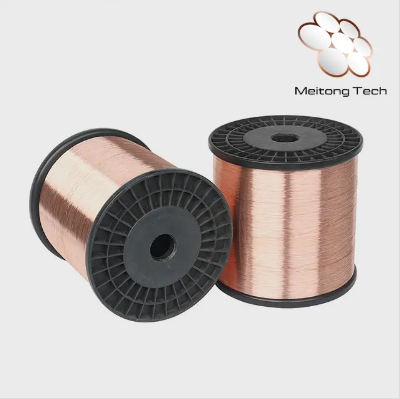Views: 0 Author: Site Editor Publish Time: 2025-09-03 Origin: Site












In the realm of electrical engineering and telecommunications, the term "CCA" often appears in discussions related to wiring and cabling. But what does CCA mean on wire? CCA stands for Copper-Clad Aluminum, a type of wire that combines the conductivity of copper with the lightweight properties of aluminum. This unique combination offers a cost-effective solution for various applications, balancing performance and budget considerations. In this article, we will delve into the intricacies of CCA stranded wire, exploring its composition, benefits, limitations, and applications. For those interested in a detailed overview of CCA Stranded Wire, this guide provides comprehensive insights.
CCA wire is essentially an aluminum core wire that is coated with a thin layer of copper. This composition is designed to leverage the advantageous properties of both metals. Copper is renowned for its excellent electrical conductivity, while aluminum is valued for its light weight and cost-effectiveness. By cladding aluminum with copper, manufacturers can produce a wire that maintains good conductivity while being lighter and less expensive than pure copper wire.
The process of creating CCA wire involves bonding a thin layer of copper onto an aluminum core. This is typically achieved through a metallurgical process that ensures a strong bond between the two metals, allowing the wire to function effectively in various applications. The copper layer not only enhances conductivity but also provides a degree of corrosion resistance, which is crucial for maintaining the wire's performance over time.
One of the primary benefits of CCA wire is its cost efficiency. Copper is a relatively expensive material, and by using aluminum as the core, manufacturers can significantly reduce the cost of the wire. This makes CCA wire an attractive option for budget-conscious projects that still require reliable electrical performance.
In addition to cost savings, CCA wire is also lighter than pure copper wire. This can be a significant advantage in applications where weight is a critical factor, such as in aerospace or automotive industries. The reduced weight can lead to easier handling and installation, as well as potential savings in transportation costs.
Despite its benefits, CCA wire is not without its limitations. One of the main drawbacks is its lower conductivity compared to pure copper wire. While the copper cladding does improve conductivity, it does not match the performance of a solid copper wire. This can be a critical consideration in applications where maximum conductivity is required.
Another limitation is the potential for galvanic corrosion. When CCA wire is used in environments where it is exposed to moisture or other corrosive elements, the aluminum core can be susceptible to corrosion if the copper layer is compromised. This can lead to degradation of the wire's performance over time, necessitating careful consideration of the operating environment when choosing CCA wire.

CCA wire is used in a variety of applications where cost and weight are significant considerations. It is commonly found in residential and commercial electrical wiring, where its cost-effectiveness makes it an attractive alternative to pure copper wire. Additionally, CCA wire is used in the telecommunications industry for coaxial cables and other types of data transmission lines.
In the automotive industry, CCA wire is used in wiring harnesses and other electrical components where weight reduction is a priority. The aerospace industry also utilizes CCA wire for similar reasons, as the reduced weight can contribute to overall fuel efficiency and performance of aircraft.
In conclusion, CCA wire represents a unique solution that combines the benefits of copper and aluminum to provide a cost-effective, lightweight alternative to traditional copper wiring. While it does have some limitations, particularly in terms of conductivity and potential for corrosion, its advantages in terms of cost and weight make it a viable option for many applications. For those interested in exploring the potential of CCA Stranded Wire, understanding its composition, benefits, and limitations is crucial for making informed decisions in electrical and telecommunications projects.
1. What does CCA stand for in wiring?
CCA stands for Copper-Clad Aluminum, a type of wire that combines the conductivity of copper with the lightweight properties of aluminum.
2. Why is CCA wire used instead of pure copper wire?
CCA wire is used because it is more cost-effective and lighter than pure copper wire, making it suitable for budget-conscious projects where weight is a concern.
3. What are the main benefits of CCA wire?
The main benefits of CCA wire include cost efficiency, reduced weight, and ease of handling and installation.
4. What are the limitations of CCA wire?
Limitations of CCA wire include lower conductivity compared to pure copper wire and potential for galvanic corrosion if the copper layer is compromised.
5. In which industries is CCA wire commonly used?
CCA wire is commonly used in the electrical, telecommunications, automotive, and aerospace industries.
6. How is CCA wire manufactured?
CCA wire is manufactured by bonding a thin layer of copper onto an aluminum core through a metallurgical process.
7. Can CCA wire be used in all environments?
CCA wire should be used with caution in environments prone to moisture or corrosive elements, as the aluminum core may be susceptible to corrosion if the copper layer is compromised.
